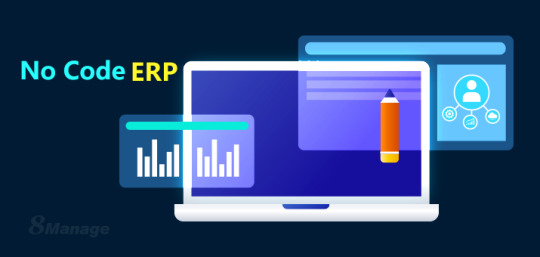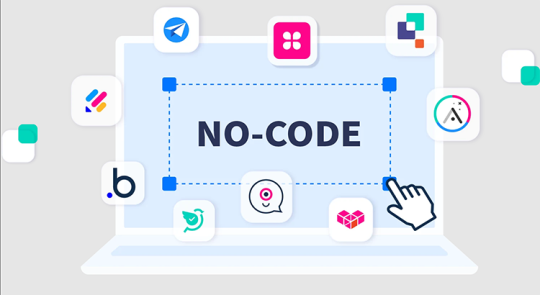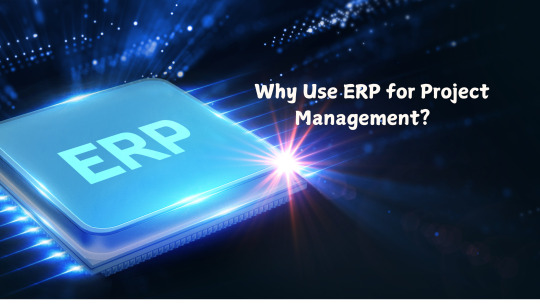#project ERP
Explore tagged Tumblr posts
Text
Why Are Small and Medium-Sized Enterprises (SMEs) Better Suited for No-Code ERP? Three Key Reasons
As the business environment evolves rapidly and technology advances, the need for efficient management tools is becoming increasingly critical. For small and medium-sized enterprises (SMEs), selecting the right ERP system is crucial. Among the available options, no-code ERP systems are gaining popularity due to their unique advantages. So, why are SMEs better suited for no-code ERP systems? This article delves into three core reasons.

1.Cost-Effectiveness: The Ideal Choice for Resource-Limited Businesses
SMEs often face constraints in both funding and human resources. Traditional ERP systems, with their high costs and complex deployment processes, can be overwhelming for these businesses.
1.Low Initial Costs
No-code ERP systems eliminate the need for expensive development and specialized technical teams. Companies can configure the system with ease, significantly reducing initial investment. For instance, certain solutions offer integrated management functions, enabling quick deployment without requiring a substantial budget.
2.Reduced Maintenance Expenses
Traditional ERP systems demand regular updates and professional team support. In contrast, no-code ERP systems feature simplified interfaces and automation that drastically lower maintenance costs. Employees can operate the system after brief training, minimizing reliance on external support.
3.Quick Implementation
The rapid deployment capabilities of no-code ERP systems allow businesses to integrate the system within a short period. This is especially beneficial for SMEs needing to respond swiftly to market changes. The modular design of some systems enables efficient operation with minimal technical barriers.
2.Flexibility and Scalability: Meeting Personalized Business Needs
As SMEs grow, their business requirements frequently change. Therefore, flexibility and scalability are critical considerations when selecting an ERP system.
1.Effortless Customization of Business Processes
No-code ERP systems allow businesses to customize processes through drag-and-drop components and simple configurations. This integrated management approach helps companies adapt to market changes and streamline internal workflows. For example, businesses can tailor modules for procurement, finance, or project management, greatly enhancing system adaptability.
2.Modular Expansion
As businesses grow, their operational demands increase. No-code ERP systems enable companies to add modules, such as project ERP systems, human resource management, or inventory management, as needed, avoiding unnecessary system redundancy. Certain solutions offer highly integrated modular features, supporting business expansion across different growth stages.
3.Strong Compatibility
No-code ERP systems typically support seamless integration with other tools or platforms, such as CRM systems or financial software. This compatibility helps SMEs establish an efficient digital ecosystem. Some systems can integrate with widely used tools, improving collaborative efficiency.
3.Lowering the Technical Barrier: Empowering Non-Technical Staff
For many SMEs, the lack of a dedicated IT team is a significant challenge. No-code ERP systems are designed to address this issue.
1.No Technical Expertise Required
A major advantage of no-code ERP systems is their simple and intuitive user interface. Employees can operate the system after brief training without needing to learn complex programming languages. Some solutions feature user-friendly interfaces, allowing employees to get started quickly and focus on practical application.
2.Fast Iterations and Adjustments
Traditional ERP systems often require developer involvement for any functional changes. In contrast, no-code ERP systems allow in-house staff to modify configurations in real time, swiftly responding to business needs. Certain solutions support flexible adjustments, enabling businesses to maintain efficiency amid changes.
3.Reduced Dependence on External Technology
No-code ERP systems minimize reliance on external technical services. Once the system is running smoothly, businesses can focus more on core operations and growth.

How Do No-Code ERP Systems Enable SMEs to Achieve Integrated Management?
No-code ERP systems not only address the high costs and complexity of traditional ERP systems but also facilitate integrated business management. By consolidating multiple business modules into one system, no-code ERP enhances data transparency and visualization, optimizes resource allocation, and improves operational efficiency.
For instance, a small manufacturing company can use a no-code ERP system to manage procurement, inventory, production, and sales without switching between multiple systems. Centralized data management allows businesses to analyze market demand accurately and optimize production planning. Some solutions enable comprehensive integration from finance to project management, significantly boosting efficiency.
Frequently Asked Questions (FAQs)
1.What Is a No-Code ERP System?
A no-code ERP system is an enterprise resource planning system that requires no programming knowledge for configuration and operation. Through an intuitive interface and simple configuration tools, it allows businesses to quickly set up workflows, making it ideal for SMEs that need rapid deployment and adjustments.
2.What Is the Difference Between Project ERP Systems and No-Code ERP Systems?
Project ERP systems focus on project management, typically tracking project progress, costs, and resource allocation. No-code ERP systems, on the other hand, are more versatile platforms that integrate multiple modules, including finance, HR, and inventory, in addition to project management. Some solutions cater to both project-specific and broader business needs through integrated functionality.
3.How Can SMEs Choose the Right No-Code ERP System?
When selecting a no-code ERP system, SMEs should consider the following factors:
● The system’s ease of use and learning curve for employees.
● Support for modular expansion to accommodate future business growth.
● The service quality and technical support provided by the system’s vendor. Some solutions are well-regarded for offering comprehensive support services.
Through the above analysis and answers, it is evident that no-code ERP systems, with their cost-effectiveness, flexibility, and ease of use, are highly suitable for SMEs. For SMEs aiming for digital transformation, choosing a no-code ERP system is a significant step toward success.
0 notes
Text
https://www.saglobal.com/int/our-products/cloud-based-project-erp-solution-the-future-of-project-management.html
evergreen and empower by sa.global - Your Project ERP | Cloud Enterprise SaaS Solutions
Discover evergreen and empower, our comprehensive cloud-based enterprise SaaS solutions. Go beyond the capabilities of a Project ERP and enhance project management with advanced features and integrations, designed to streamline your business operations and drive growth.
0 notes
Text









We would like to give our great thanks to one of our reliable workhorses inside Project Odin for this analysis of the PCU and ultimately its consequences for RP on Argent Dawn.
Big Billy is a well known, one could say antique player from Argent Dawn's oldest times. We appreciate his input greatly as someone who has been around for even longer than we have has perspective that players today simply do not have on how things have changed.
It is support of him and others, like yourselves good readers, who have kept this place afloat over the years.
#confessions of argent dawn#pcu#argent dawn eu#perroy#hypocrisy#harassment#erp#the rotgarde#bullying#project odin
7 notes
·
View notes
Text
How ERP Systems Enhance Business Process Management?
3 notes
·
View notes
Text
Unlocking the Mysteries of Southeast Asian Art in Times of War: You Won’t Believe What These Artists Revealed!
by Embassy Row Project

In the midst of tumultuous battles and whispered conflicts, a remarkable story unfolds across the canvas of Southeast Asia. “The Quiet History of Southeast Asian Warfare and Conflict Zone Art” invites you to embark on an extraordinary journey through the heart and soul of a region steeped in history and strife. This captivating exploration weaves together narratives of ancient battles, artistic resistance, and modern protests, revealing how art has both reflected and shaped the course of Southeast Asian history.
What You’ll Learn:
-Carved in Stone: Unearth the ancient narratives etched into the walls of Angkor Wat and Borobudur, unveiling the roots of Southeast Asian conflict.
-Dissent in Brush Strokes: Dive into the role of art as a powerful tool in anti-colonial movements, where every brushstroke became a cry for freedom.
-Revolution on Canvas: Discover the Hanoi School of Art and its impact on the tumultuous Indochina Wars, where artists became warriors of expression.
-Images of Resistance: Explore the propaganda art of North Vietnam, witnessing how visuals were wielded as weapons.
-Sketches from the Frontlines: Witness the emergence of combat art, as artists ventured into the heart of conflict zones to capture the raw essence of war.
-The Art of Dissent: Delve into Thailand’s socially conscious creative movement, where artists challenged the status quo with their provocative works.
-Visual Resistance: Follow Carlos Francisco’s artistic rebellion during Martial Law in the Philippines, where his art spoke louder than words.
-Survival and Remembrance: Experience the profound impact of Vann Nath’s art in the aftermath of the Khmer Rouge’s brutality.
-Hidden in Plain Sight: Uncover the allegories of power and suppression in Burmese contemporary art, where hidden messages challenge oppression.
-After the Blast: Gain insight into Balinese artistic responses to the 2002 bombings, showcasing how art heals wounds and sparks resilience.
“The Quiet History of Southeast Asian Warfare and Conflict Zone Art” is a compelling narrative that illuminates the silent warriors of the region, artists who courageously etched their voices into history. This book is a testament to the enduring power of art to reflect, resist, and reshape the world in times of turmoil. Prepare to be captivated, inspired, and moved as you journey through these pages, for you are about to discover a hidden history that has long been overlooked, yet resonates loudly in the heart of Southeast Asia. Embrace this powerful odyssey through art, conflict, and the enduring human spirit.
Read more at https://medium.com/@artifaktgallery/the-quiet-history-of-southeast-asian-warfare-and-conflict-zone-art-6ffb4306beeb
#ERP#Embassy Row Project#Artifakt Gallery#Southeast Asia War Gallery#Southeast Asian Warfare#Southeast Asian Warfare Timeline
2 notes
·
View notes
Text
Posting singing tomorrow!!
#making a post about it so that I can hold myself accountable and ensure that I don't back out#music is GOOD for you creative projects are GOOD for you#(also the point is to actively have people listen to this one and not just send it to a few people with no response so...)#(yay erp 🎉)#The Horrors™ (<-being artistically perceived i.e. the most vulnerable I could possibly be)#mel's complicated relationship with art
3 notes
·
View notes
Text
Why Use ERP for Project Management?

Effective project management is essential to a company's success from the very beginning. However, tracking projects, resources, and budgets becomes more difficult as businesses expand. In the absence of a streamlined procedure, costs could increase, cooperation could stall, and resources could be squandered.
This is where ERP project management modules step in. These modules enable businesses to create, manage, and monitor projects within a single system. Here's how ERP systems enhance project management:
Comprehensive Tracking: Link projects with quotations, purchase orders, invoices, and delivery notes to keep a centralized track of all activities.
Enhanced Budget Control: Monitor purchasing and selling activities against the project to track budget, delivery timelines, and profitability.
Adaptability: Manage internal projects, manufacturing jobs, or service-based projects with ease.
However, the success of ERP project management is contingent on active participation. Teams must consistently update and follow the processes outlined within the system for optimal results.
Breaking Down the ERP Workflow
Here are ERP project management's main components:
1. Project Setup
A project is the central hub for all details, including milestones, tasks, and linked records like quotations and invoices. The project record serves as the foundation for monitoring progress and performance.
2. Task Allocation
Projects are divided into manageable tasks, which are assigned to specific team members or departments. Each task has attributes such as priority, start and end dates, dependencies, and related expense claims. This structured breakdown ensures clarity and accountability.
3. Timesheet Management
Timesheets provide a detailed account of how team members spend their time on various tasks. Tracking working hours helps businesses:
Measure productivity.
Monitor billable activities.
Generate reports on time spent on tasks or projects.
4. Project Cost Tracking
The cost of each project is calculated by analyzing timesheets and other expenses. Accurate cost tracking helps businesses stay within budget and identify areas for cost optimization.
5. Profitability Analysis
Profitability reports compare the revenue generated by a project with its associated costs. By analyzing these reports, businesses can make informed decisions to optimize resource usage and improve project ROI.
Setting Up a Workflow with ERP
To illustrate the process, let’s consider an example:
Saf and Mel, co-founders of Spindl, are working on their summer clothing collection. Here’s how they use their ERP project management module:
Project Creation: The main project is created with all details, including name, status, progress, and task list.
Task Assignment: Tasks are allocated to employees from various departments. Each task outlines actionable duties, deadlines, and associated expense claims.
Timesheet Tracking: Employees track their working hours, billable activities, and progress against tasks using timesheets.
Monitoring Costs and Profitability: Administrative staff monitor project costs and profitability reports to ensure optimal resource utilization and budget adherence.
Key Benefits of ERP Project Management
Streamlined Processes: Centralized project tracking and management eliminate redundancies.
Improved Resource Allocation: Task and time tracking optimize employee productivity.
Enhanced Budget Control: Real-time insights into costs and revenues ensure financial discipline.
Scalability: ERP systems grow with your business, adapting to increasing complexities seamlessly.
Conclusion
ERP project management modules are indispensable tools for modern businesses. They offer a structured approach to project handling, enabling organizations to achieve their goals efficiently and profitably. By integrating all aspects of project management within one system, businesses can focus on innovation and growth.
Embrace ERP project management to take your business operations to the next level!
0 notes
Text
Benefits of Implementing ERP Software for Engineering Firms

The engineering industry is one of the biggest industries in the world, and it plays an important role in growing the economy as well. The engineering sector is growing day by day and is highly competitive. Hence, efficiency, accuracy, and streamlined operations are crucial for success in this sector. Businesses face several challenges in this sector, like the complexities of a project, resource management, and deadline restrictions. ERP software for engineering firms is the best way to overcome all of these challenges as it integrates and automates business processes.
Here is the list of top benefits of utilizing ERP systems for the engineering industry:
1. Project Management:
The projects in engineering sectors have a detailed documentation process, different teams, and complicated workflows. ERP system for engineering firms help in various ways, like centralizing project data, enabling limitless collaboration, and getting real-time updates. Because of this software, every team member has all the updates, which in turn reduces miscommunication and delays in the project.
2. Resource Management:
For all engineering projects, it is essential to allocate all resources carefully, like equipment, materials, and labor. With the utilization of ERP software, the monitoring of resources can be performed easily. It helps in checking resource availability, optimizing usage, and forecasting requirements. This ultimately results in improving cost efficiency.
3. Quality Management:
Ensures engineering projects meet industry standards and regulations.
Quality Control: Offers tools for monitoring and managing the quality of materials, processes, and completed projects.
4. Data Management:
Using ERP software, engineering firms can make sure that they can get a unified database to eliminate data silos and ensure consistency through all departments. A centralized data management system is beneficial for decision-making as well it provides critical information when required.
5. Time and Budget Management:
When the whole system gets automated with ERP software, it reduces time and cost on repetitive tasks like data entry, procurement, and inventory management. The utilization of ERP systems in engineering firms helps in reducing manual errors and improving productivity. Hence, the firms can focus on other important things like innovation and project execution.
6. Client Relationship Management:
Most ERP systems include customer relationship management tools that are very helpful in managing client interactions. This tool allows the firm to track communication history, project milestones, and client preferences. Because of this feature, firms can improve customer satisfaction and build long-term relationships.
7. Scalability and Flexibility
ERP solutions may scale with the company as it grows, allowing for more projects, clients, and resources. Customization: ERP solutions can typically be tailored to an engineering firm’s specific demands and operations.
8. Financial Management
Accounting combines financial accounting with project management to provide a complete picture of the company’s financial health. Reporting: Creates detailed financial reports, such as profit and loss statements, balance sheets, and cash flow statements.
How PMTRACK ERP Helps:
Managing development processes, monitoring complex projects, and ensuring seamless collaboration across divisions are becoming increasingly important for company success. Engineering organizations in Pune, India, and around the world have distinct issues in successfully managing their operations.
Implementing a bespoke Enterprise Resource Planning (ERP) solution provides transformative benefits by streamlining processes, improving project management, and ultimately generating profitability.
For businesses considering ERP adoption, selecting the correct ERP software vendor is critical. PMTRACK ERP, a reputable ERP solution provider in Pune, India, specializes in engineering ERP systems tailored to the demands of engineering and manufacturing companies.
ERP software is used to connect project management with financial accounting, inventory control, and procurement procedures. This integration gives project managers real-time information about project costs, resource availability, and schedules, resulting in better-informed decisions and more effective project execution.
Engineering firms that use an ERP system can improve operational efficiency, reduce costs, improve project delivery, and ultimately boost client satisfaction and profitability.
Summary:
ERP software provides several advantages to engineering firms in Pune, India, ranging from better project management and financial control to higher client satisfaction and scalability. Engineering organizations can employ a comprehensive ERP solution to improve operations, decrease inefficiencies, and drive long-term growth.
PMTRACK ERP, one of the leading ERP solution providers in Pune, India, provides comprehensive, industry-specific ERP solutions that are suitable for engineering organizations’ unique requirements. Firms that collaborate with an experienced engineering ERP software company in India receive a trusted partner in negotiating the complexity of their business, setting them up for success in an increasingly competitive landscape.
#efficiency#accuracy#and streamlined operations are crucial for success in this sector. Businesses face several challenges in this sector#like the complexities of a project#resource management#Here is the list of top benefits of utilizing ERP systems for the engineering industry:#1. Project Management:#The projects in engineering sectors have a detailed documentation process#different teams#and complicated workflows. ERP system for engineering firms help in various ways#like centralizing project data#enabling limitless collaboration#and getting real-time updates. Because of this software#every team member has all the updates#which in turn reduces miscommunication and delays in the project.#2. Resource Management:#For all engineering projects#it is essential to allocate all resources carefully#like equipment#materials#and labor. With the utilization of ERP software#the monitoring of resources can be performed easily. It helps in checking resource availability#optimizing usage#and forecasting requirements. This ultimately results in improving cost efficiency.#3. Quality Management:#Ensures engineering projects meet industry standards and regulations.#processes#and completed projects.#4. Data Management:#Using ERP software
0 notes
Text
Enhance Your Business Operations with Microsoft ERP System

In the competitive business world, companies need innovative tools to manage operations effectively. A Microsoft ERP system is one such solution. It centralizes data, automates processes, and boosts productivity.
With advanced features, it helps businesses streamline workflows and make data-driven decisions. Whether you’re a small business or a large corporation, Microsoft ERP can align with your needs.
Benefits of a Microsoft ERP System
A Microsoft ERP system offers numerous advantages. These include seamless integration with existing tools, robust security, and scalable solutions.
Key Features:
Comprehensive Data Management Integrate multiple business functions into one platform.
Real-Time Insights Access up-to-date analytics for better decision-making.
Customizability Tailor the system to meet your unique business needs.
By choosing Microsoft ERP, businesses can enhance efficiency and drive growth.
Smooth Transitions with Dynamics NAV Project Upgrade
Many companies struggle with outdated ERP systems. Upgrading to a modern platform is crucial for staying competitive. A Dynamics NAV project upgrade ensures a smooth transition to advanced technology.
Why Upgrade?
Enhanced Functionality New features simplify operations and improve performance.
Improved User Experience A modern interface ensures easier adoption.
Long-Term Scalability Prepare your business for future growth.
Partnering with experts for your Dynamics NAV project upgrade ensures minimal disruption and maximum benefits.
Importance of Business Central ERP Support Services
Effective support is critical for getting the most out of your ERP system. Business Central ERP support services provide ongoing assistance to ensure optimal performance.
Benefits of ERP Support:
Proactive Maintenance Regular updates keep the system running smoothly.
Quick Issue Resolution Minimize downtime with timely solutions.
Expert Guidance Get advice tailored to your business needs.
With Business Central ERP support services, companies can maximize their ERP system’s potential.
Choosing Microsoft Dynamics NAV Support Services
Legacy ERP systems like Microsoft Dynamics NAV remain integral for many businesses. However, they require consistent maintenance. Microsoft Dynamics NAV support services ensure that these systems continue to deliver value.
Why Invest in Support Services?
System Longevity Extend the life of your existing ERP system.
Customized Solutions Tailored services address your unique challenges.
Risk Mitigation Avoid costly disruptions with expert assistance.
Whether you’re maintaining your current setup or planning to upgrade, Microsoft Dynamics NAV support services are indispensable.
Integrating ERP Systems into Your Business
ERP systems integrate various business processes, such as finance, HR, and supply chain management. Choosing the right ERP system is vital for achieving your business goals.
Steps for Successful ERP Integration:
Assess Business Needs Identify areas where an ERP system can add the most value.
Select the Right Partner Work with a provider experienced in your industry.
Plan for Change Management Ensure employees adapt seamlessly to the new system.
Integration is not just about technology. It’s also about aligning systems with your business strategy.
The Role of ERP Support in Business Growth
Support services play a crucial role in maximizing the value of ERP systems. They ensure your ERP system operates at peak performance, enabling your business to adapt to changing demands.
Key Support Services Include:
System Optimization Regular updates and configurations improve efficiency.
Training and Documentation Empower employees with the knowledge to use the system effectively.
Performance Monitoring Identify and resolve issues before they impact operations.
Partnering with experts ensures your ERP system remains a valuable asset.
Why Choose Microsoft ERP Systems?
Microsoft ERP systems are trusted worldwide for their reliability and functionality. They offer advanced features designed to meet the needs of businesses across industries.
Key Reasons to Choose Microsoft ERP:
Global Recognition Microsoft is a leader in technology innovation.
Continuous Innovation Regular updates keep the system ahead of industry standards.
Seamless Integration The system works flawlessly with other Microsoft tools.
Whether it’s Business Central ERP support services or a Dynamics NAV project upgrade, Microsoft offers solutions that empower businesses.
Conclusion
Investing in a Microsoft ERP system is a strategic decision for businesses looking to streamline operations and drive growth. Whether you need to upgrade your system or ensure its ongoing performance, services like Dynamics NAV project upgrade and Microsoft Dynamics NAV support services provide the expertise you need.
By choosing the right system and support, your business can achieve greater efficiency and adaptability in an ever-changing market. Optimize your operations today and pave the way for long-term success.
#microsoft erp system#dynamics nav project upgrade#business central erp support services#microsoft dynamics nav support services
0 notes
Text
Maximizing Efficiency with Odoo Integration Malaysia: A Smart Solution for Businesses
In the modern business landscape, seamless integration of various operational tools is key to maximizing efficiency and ensuring smooth workflows. One such solution that has gained widespread attention in Malaysia is Odoo Integration Malaysia. This powerful ERP software integrates with various business functions, from finance and accounting to manufacturing and e-commerce. In this blog, we’ll explore how Odoo integration can benefit businesses in Malaysia, particularly in areas like manufacturing, invoicing, and regulatory compliance.
What is Odoo Integration Malaysia?
Odoo Integration Malaysia refers to the process of incorporating Odoo, a comprehensive enterprise resource planning (ERP) system, into a company’s existing software infrastructure. Odoo provides a suite of applications that allow businesses to automate and streamline processes such as inventory management, accounting, customer relationship management (CRM), and manufacturing.
The beauty of Odoo lies in its flexibility. It can be tailored to fit the specific needs of different industries, making it a go-to solution for businesses of all sizes. When integrated correctly, Odoo can ensure that data flows seamlessly across departments, reducing the need for manual intervention and improving overall productivity.
How Odoo Integration Enhances Manufacturing Software Malaysia
One of the key advantages of Manufacturing Software Malaysia is its ability to manage production processes efficiently. By integrating Odoo with manufacturing software, companies can automate many aspects of production management, such as inventory tracking, procurement, and scheduling. Odoo’s manufacturing module allows businesses to optimize their production workflows, reduce downtime, and minimize errors.
With Odoo’s integration, manufacturers can gain real-time insights into their operations, such as tracking raw materials, finished goods, and work orders. This enhanced visibility helps manufacturers make better decisions, plan production schedules more accurately, and ultimately improve their bottom line.
Integrating Malaysia E-Invoicing Solutions with Odoo
The shift toward digital invoicing is becoming increasingly important for businesses in Malaysia. Malaysia e-invoicing solutions enable companies to generate, send, and receive invoices electronically, ensuring compliance with local tax regulations. By integrating Odoo with Malaysia’s e-invoicing system, businesses can automate the invoicing process and ensure that invoices are submitted directly to the Inland Revenue Board (LHDN).
This integration streamlines the invoicing process, reduces errors, and eliminates the need for manual data entry. Additionally, real-time invoicing allows for quicker payment processing, improving cash flow for businesses. With Odoo, businesses can ensure that their invoicing is fully automated, accurate, and compliant with Malaysian regulations.
The Role of LHDN E-Invoice Vendor Malaysia in Odoo Integration
An LHDN e-invoice vendor Malaysia plays an essential role in ensuring that businesses meet the legal requirements for e-invoicing. These vendors offer software solutions that integrate seamlessly with business systems like Odoo. By working with a certified LHDN e-invoice vendor, businesses can automate the submission of e-invoices to LHDN, reducing the risk of human error and ensuring compliance with local tax laws.
The integration of Odoo with an LHDN e-invoice vendor simplifies the entire invoicing process, enabling businesses to generate and submit invoices with just a few clicks. This streamlined process saves time, reduces administrative costs, and improves tax reporting accuracy, allowing businesses to focus on growth rather than regulatory compliance.
Why Choose Odoo Integration Malaysia for Your Business?
Integrating Odoo with various business functions, including manufacturing and e-invoicing, offers numerous benefits for businesses in Malaysia. Odoo’s flexible and scalable solutions can be tailored to meet the specific needs of different industries. By automating workflows, businesses can increase efficiency, reduce errors, and make better data-driven decisions.
Moreover, integrating Odoo with Malaysia e-invoicing solutions ensures that businesses comply with tax regulations while improving invoicing efficiency. As the regulatory landscape continues to evolve, businesses must choose solutions that are both adaptable and reliable.
For businesses looking to take advantage of seamless e-invoicing integration, Peppol Sync offers reliable solutions that integrate directly with Odoo, ensuring smooth, compliant invoicing processes. By choosing the right integration partner, businesses can streamline their operations, reduce costs, and improve overall efficiency.
In conclusion, Odoo Integration Malaysia is a powerful tool for businesses seeking to optimize their operations. Whether it’s through improved manufacturing software, enhanced invoicing processes, or seamless integration with local tax systems, Odoo provides the flexibility and scalability businesses need to stay competitive. With the right integration strategy, businesses can unlock the full potential of their ERP system and drive growth for years to come.
#Odoo Integration Malaysia#Odoo Migration Malaysia#Open Source Erp Malaysia#Project Management Software Malaysia
0 notes
Text
ERP Systems: Driving Transportation Industries into the Future

The transportation industry, an ever-evolving sector, plays a critical role in a nation's economic development. As businesses strive to achieve efficiency, scalability, and seamless operations, ERP systems emerge as a game-changing solution. From project management in Mumbai to optimizing logistics in remote corners of India, ERP systems are redefining the way transportation companies operate, enabling them to meet modern-day challenges with precision.
What Are ERP Systems?
Enterprise Resource Planning (ERP) systems are integrated software solutions that help businesses manage and automate their core processes. These include accounting, inventory, human resources, project management, and more. ERP systems consolidate data into a unified platform, ensuring that all departments can collaborate effectively, make informed decisions, and drive efficiency.
The Role of ERP Systems in Transportation
The transportation industry involves multiple complex processes, including fleet management, route optimization, supply chain coordination, and compliance with regulations. ERP systems streamline these processes by providing real-time insights, automating repetitive tasks, and offering tools for advanced project management.
Here are key areas where ERP systems are transforming transportation:
Fleet Management
ERP systems enable real-time monitoring of vehicles, fuel usage, maintenance schedules, and driver performance. This ensures reduced downtime, lower operational costs, and improved service delivery.
Supply Chain Optimization
With ERP, transportation companies can streamline logistics, track shipments, and manage warehouses more effectively. The software offers real-time visibility into the supply chain, making it easier to handle disruptions and maintain customer satisfaction.
Regulatory Compliance
Transportation businesses in India face stringent compliance requirements. ERP systems automate record-keeping and ensure adherence to local and international regulations, minimizing legal risks.
Project Management
From planning routes to scheduling deliveries, ERP systems for project management in Mumbai and across India provide tools to execute transportation projects efficiently. These tools help companies stay on schedule and within budget while meeting customer demands.
ERP Systems for Project Management in Mumbai
Mumbai, India’s financial hub, is a bustling metropolis where transportation plays a pivotal role in business operations. With its dense population, heavy traffic, and dynamic business environment, effective project management is crucial for success. ERP systems address these challenges by:
Providing real-time data to track project progress.
Automating scheduling for vehicle dispatch and deliveries
Enhancing collaboration between different departments and external stakeholders.
For example, logistics companies in Mumbai can use ERP systems to plan optimal delivery routes, reduce fuel consumption, and improve turnaround times, ensuring timely delivery of goods despite the city's congestion.
ERP Systems for Project Management in India
Across India, the transportation industry faces unique challenges, from managing large fleets over vast geographical areas to dealing with unpredictable road conditions. ERP systems help businesses navigate these complexities by offering:
Scalable Solutions: Whether managing local deliveries or cross-country shipments, ERP systems adapt to the size and scope of operations.
Data-Driven Insights: By analyzing historical and real-time data, transportation companies can make strategic decisions to improve efficiency.
Integration Capabilities: ERP systems integrate with GPS, IoT devices, and other technologies, ensuring a seamless flow of information across the organization.
For instance, a logistics provider in rural India can use ERP systems to track vehicle locations, monitor fuel usage, and manage warehouse inventories, all from a centralized dashboard.
Future of ERP Systems in Transportation
The future of transportation lies in digitization and automation. ERP systems, with their ability to integrate emerging technologies like AI, blockchain, and IoT, are set to play a pivotal role in this transformation. For transportation companies, especially those focusing on project management in Mumbai and other parts of India, embracing ERP systems is no longer an option—it’s a necessity to stay competitive.
Conclusion
ERP systems have become the backbone of modern transportation businesses, driving efficiency, reducing costs, and ensuring superior customer service. Whether in Mumbai or across India, transportation companies leveraging ERP systems for project management are better equipped to face challenges, seize opportunities, and achieve sustainable growth.
As the transportation industry continues to evolve, ERP systems will remain a critical tool for businesses looking to navigate the complexities of the future.
0 notes
Text
#ERP solution for contractors#Contractor management software#Construction ERP software#All-in-one ERP for contractors#Best ERP for construction industry#Project management ERP for contractors#Contractor operations software#ERP for general contractors#ERP for specialty contractors#Streamlining contractor operations#Best ERP software for construction contractors#ERP for managing contractor bids and projects#Cloud-based ERP for construction industry#How to streamline contractor operations with ERP#ERP solution for efficient project management#Contractor job tracking software#Financial management ERP for contractors#AI-powered ERP for contractors#Real-time project tracking ERP#Contractor workforce management ERP
1 note
·
View note
Text
Long Term Success with NetSuite Solution Provider | OpenTeQ Consultant
Enterprise resource planning (ERP) systems, such as NetSuite, are essential for increasing efficiency and optimizing operations in the fast-paced company environment of today. However, continuous maintenance and support—which entails a blend of best practices catered to your company's changing needs—are necessary to guarantee NetSuite's long-term success. One of the top NetSuite Solution Provider Partners, OpenTeQ, is excellent at providing NetSuite services, such as ERP support, data migration, and customisation. To ensure NetSuite's long-term success for your company, let's examine the best practices for upkeep and maintenance.
1. Leverage Expert NetSuite Customization
With an ERP system as flexible as NetSuite, a one-size-fits-all strategy might not be effective because every company has different needs. Through collaboration with professionals such as OpenTeQ, companies may leverage NetSuite Customization to customize reports, dashboards, and workflows. By periodically reviewing and revising these customizations, you can make sure they stay in line with evolving business procedures and keep your ERP a potent growth tool.
2. Streamline Data with NetSuite Data Migration
The foundation of any ERP system is data. Avoiding interruptions during system upgrades or consolidations requires a smooth data migration. OpenTeQ specializes in NetSuite Data Migration, offering meticulous planning and execution to ensure the accuracy and security of your valuable information. Maintaining data integrity and becoming ready for future migrations also require regular audits and backups.
3. Rely on a Trusted NetSuite Solution Provider Partner
Data is the cornerstone of any ERP system. A seamless data movement is necessary to prevent disruptions during system upgrades or consolidations. With a focus on NetSuite Data Migration, OpenTeQ provides careful planning and execution to guarantee the protection and correctness of your priceless data. Regular audits and backups are also necessary to preserve data integrity and prepare for upcoming migrations.
4. Utilize Comprehensive NetSuite ERP Support
A well-maintained system is built on a foundation of strong NetSuite ERP support. Companies should spend money on 24/7 assistance to reduce downtime and quickly resolve concerns. OpenTeQ provides extensive ERP support, including troubleshooting, performance optimization, and user training. Businesses can guarantee customer happiness and preserve operational continuity with a committed support staff.
5. Collaborate with a Skilled NetSuite Implementation Team
Implementation is the cornerstone of a successful NetSuite system. Working with an experienced NetSuite Implementation Team, such as OpenTeQ's, guarantees that your system is set up correctly right away. It is equally important to continue working with this team after implementation. In order to satisfy changing company needs, they can assist with performance monitoring, update implementation, and feature optimization.
6. Embrace Proactive Monitoring and Updates
To avoid possible problems and maintain the functionality of your NetSuite system, proactive monitoring and frequent updates are crucial. To find vulnerabilities and guarantee compliance with the newest NetSuite features, OpenTeQ advises doing regular health checks. Keeping up with software updates improves security protocols to safeguard confidential company information in addition to performance.
7. Provide Continuous Training for Users
The effectiveness of a well-maintained system depends on its users. Your team will be proficient in making the most of NetSuite's features if you invest in ongoing training for them. OpenTeQ offers tailored training sessions to empower employees with the skills needed to drive business success using NetSuite.
Conclusion
Long-term success with NetSuite maintenance and support necessitates a systematic approach that includes preemptive steps, data management, dependable relationships, and customisation. As a NetSuite Solution Provider Partner, OpenTeQ's experience guarantees that companies have the resources, tools, and assistance they require to succeed. OpenTeQ is your reliable partner in optimizing the return on your NetSuite investment, from ERP support and implementation to NetSuite customization and data migration.
Reach out to OpenTeQ for expert NetSuite services tailored to your business needs. [email protected], +1-469 623 5106.
#NetSuite Customization#NetSuite Data Migration#NetSuite Solution Provider Partner#NetSuite ERP Support#NetSuite Implementation Team#NetSuite ERP Solution Provider#NetSuite SP Partner#NetSuite Implementation Company#NetSuite Implementation partner#NetSuite ERP Implementation#NetSuite Project Implementation#NetSuite Implementation Services
0 notes
Text
Craft a Successful ERP Implementation Plan With Entartes
An ERP implementation plan is a cornerstone for any organizations aiming to smooth operations and improve efficiency. A robust ERP system consolidates multiple processes into a single source of truth, empowering businesses to make informed decisions. However, implementing an ERP system requires meticulous preparation, strategic planning, and clear guidance to avoid costly errors. Whether you're embarking on your first ERP journey or upgrading your current system, having a structured ERP implementation project plan is critical for success.
The Core Elements of an ERP Implementation Plan
ERP implementation is a multi-phase process to your organization's unique needs. A well-defined ERP system implementation plan not only minimizes risks but also ensures a seamless transition. Here are the essential phases to include in your implementation plan:
Discovery and Planning This initial phase lays the groundwork for the entire implementation process. Comprehensive research into ERP systems is vital to identify one that aligns with your business goals. Once you've chosen a system, assemble a project team comprising:
An executive sponsor to drive strategy.
A project manager to ensure timelines and budgets are met.
End-users for testing and adoption.
Cross-functional team members to configure processes.
Reporting experts and consultants for technical expertise.
System Design Develop a detailed design for new workflows and processes. This phase involves leveraging the capabilities of the ERP software to address current challenges while automating repetitive tasks. Incorporating team input ensures that the system aligns with real-world business needs.
Development and Data Migration Configure the ERP software, integrate legacy systems, and develop custom features as required. During this phase, prioritize data migration by identifying which historical data is essential. Partnering with ERP consultants can simplify this process, ensuring accurate and efficient data transfers.
Testing and Training Rigorous testing of the ERP system is crucial to validate functionality, performance, and security. Train end-users thoroughly to facilitate smooth adoption and minimize resistance to change. Comprehensive training materials can empower employees to embrace new workflows confidently.
Deployment Launching the ERP system marks the culmination of the project. Depending on the organization's size and complexity, deployment may be staged or completed all at once. During this phase, your project team should be available to resolve issues and provide ongoing support.
Ongoing Support and Optimization Post-deployment, focus on continuous improvement by monitoring system performance, updating software, and integrating new features. Regular employee engagement and feedback loops can further enhance system utilization.

Budgeting for ERP Implementation
An accurate budget is integral to your ERP implementation project plan. Key factors to consider include:
The number of users and associated licensing costs.
The extent of customizations and integrations.
The cost of hiring implementation consultants or partners.
Change management activities such as training and communication strategies.
Always account for potential delays or unforeseen expenses. Overestimating your budget can provide a safety net to ensure smooth project execution.
Conclusion
A well-structured ERP system implementation plan ensures that businesses can capitalize on their investment while avoiding common pitfalls. With strategic planning, collaboration, and expert guidance, your organization can achieve a seamless transition and unlock the full potential of its ERP system.
0 notes
Text
“Art of Resilience: Launching, Curating, and Promoting Conflict Zone and War-Themed Galleries and Exhibits” book is now available on Amazon
by Embassy Row Project

“Art of Resilience: Launching, Curating, and Promoting Conflict Zone and War-Themed Galleries and Exhibits” is a comprehensive guide to exploring, understanding, and showcasing the powerful art borne out of conflict zones and war. As an artist, gallery owner, or aspirant, this book is your definitive roadmap to creating a platform that encapsulates the courage, resilience, and stories of conflict-affected artists and their work, echoing their voices and experiences across the globe.
Key Takeaways
· Setting the Stage: Gain a comprehensive understanding of conflict zone and war art, delving into its history, impact, and relevance in the contemporary world.
· Discovering Emerging Talent: Learn strategies to identify and source emerging artists who harness their experiences to create compelling war-themed artwork.
· Crafting a Compelling Narrative: Understand the importance of story in promoting and explaining the art and its creators.
· Designing the Gallery Space: Learn to create immersive and thought-provoking experiences that engage viewers and provoke deep reflection.
· Collaborating with Cultural Institutions: Discover the benefits of partnerships with NGOs, activists, and cultural institutions for broader reach and impact.
· Incorporating Interactive Elements: Learn how to enhance your gallery with multidisciplinary elements to create a more engaging and memorable visitor experience.
· Building a Digital Presence: Understand how to leverage social media, websites, and online galleries to promote your art and reach a global audience.
· Balancing Artistic Expression and Political Sensitivity: Grasp the delicate art of showcasing politically sensitive themes while respecting artistic freedom.
· Ensuring Security: Learn how to guarantee the safety of artists, artworks, and visitors, particularly when handling sensitive or controversial exhibits.
· The Future of Conflict Zone and War Art: Explore trends, adapt to changing landscapes, and foster hope through the transformative power of art.
“Art of Resilience: Launching, Curating, and Promoting Conflict Zone and War-Themed Galleries and Exhibits” is more than a guide — it’s a manifesto for curators, artists, and gallery owners passionate about bringing the stories of war and conflict zones to the forefront through art. Through this insightful book, you’re not just building an art gallery or an exhibit — you are creating a haven for resilience, a platform for stories that need to be told, and a beacon of hope shining through the poignant narratives of conflict zone and war-themed art. Navigate the intricate paths of this profound artistic niche and make your mark in promoting resilience through art.
— — — — — — — — — — — — — — — — — — — — — — — — — — — — — — — — — — — — — — — — — — — — — — — — — -
Now Available on Amazon!
Kindle: https://www.amazon.com/Art-Resilience-Launching-Promoting-War-Themed-ebook/dp/B0CD5VTP43/ref=sr_1_6?crid=3QI1S79Q8R4BL&keywords=Art+business+must+haves&qid=1693407696&s=digital-text&sprefix=art+business+must+haves%2Cdigital-text%2C687&sr=1-6
— — — — — — — — — — — — — — — — — — — — — — — — — — — — — — — — — — — — — — — — — — — — — — — — — -
For more books, please visit James Scott on Amazon.
You may also visit Embassy Row Project.
#ERP#Embassy Row Project#James Scott#Art of Resilience#Conflict Zone Art#War Themed Exhibits#Art business must haves#Art business online writing#The business of art#Art business#Art gallery how to do it right#The artists way#Art journal courage#Art business workbook#Art business book#Art business planner#Business of art#Art business card holder
2 notes
·
View notes